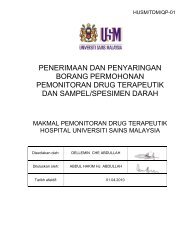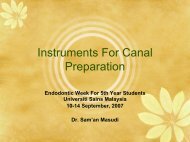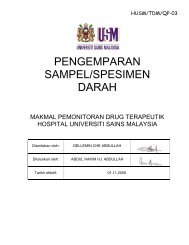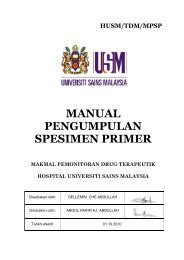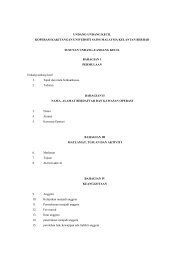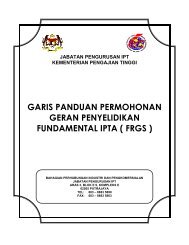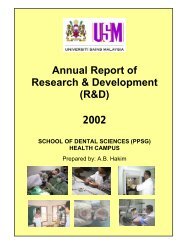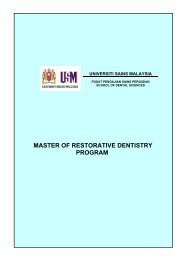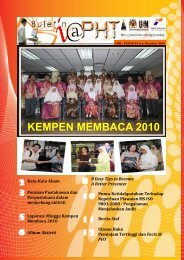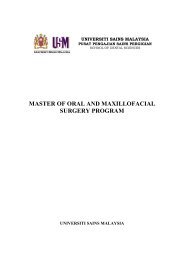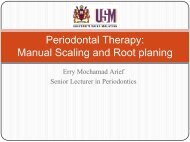Vol 11-R2- Eyelid
Vol 11-R2- Eyelid
Vol 11-R2- Eyelid
You also want an ePaper? Increase the reach of your titles
YUMPU automatically turns print PDFs into web optimized ePapers that Google loves.
SRPS • <strong>Vol</strong>ume <strong>11</strong> • Issue <strong>R2</strong> • 2010<br />
Figure 10. With an upper lid defect that includes 3 to 4 mm of residual tarsus, the upper tarsus is mobilized on a<br />
conjunctival pedicle. Advancement of the tarsoconjunctival flap is shown. The tarsus is sutured in an advanced position,<br />
forming a new posterior lamella lid margin.<br />
alone in the advancement flap spares dissection<br />
of the orbicularis, resulting in less disruption to<br />
the lower lid tissues. They suggested that the time<br />
required for the skin to stretch is less than that for a<br />
comparable myocutaneous flap, which is supported<br />
by their results showing the flap was divided at 2<br />
weeks. The skin-only flap carries a sufficient blood<br />
supply, apparent during flap division at 2 weeks,<br />
which showed bleeding from the reconstructed<br />
tarsal margin and indicated good vascularity.<br />
Another advantage of this method is eye occlusion<br />
for only 2 weeks compared with the traditional 4 to<br />
8 weeks. Only one patient developed mild ectropion<br />
and was noted to be the youngest patient needing<br />
the greatest vertical displacement to cover the upper<br />
lid defect.<br />
Dutton and Fowler 102 presented a modification<br />
of the Cutler-Beard technique, which is valuable in<br />
cases in which the upper eyelid margin is spared.<br />
The technique is helpful for patients with cicatricial<br />
upper eyelid scarring and retraction of non-marginal<br />
tumor resection. A full-thickness horizontal incision<br />
is cut just above the tarsus of the upper lid (in cases<br />
of cicatricial retraction), or the non-marginal lesion<br />
is excised, conserving the upper lid margin. The<br />
remainder of the surgery consists of the traditional<br />
Cutler-Beard technique. After 2 to 3 weeks, the flap<br />
gains adequate blood supply from above. After 3 to<br />
4 weeks, the flap is divided. The epithelium and scar<br />
tissue along the inferior border of the lower eyelid<br />
bridge and along the superior border of the upper<br />
22<br />
eyelid bridge are trimmed to expose all lamellae.<br />
The lateral and medial edges of the cheek incisions<br />
are undermined, and, if necessary, a portion of the<br />
stretched flap ends is excised. The conjunctiva and<br />
lower eyelid retractors are sutured to the inferior<br />
border of the lower tarsus with a running 6-0 fastabsorbing<br />
plain gut suture. The authors described<br />
performing the procedure in only two patients who<br />
were reported to have achieved excellent functional<br />
and cosmetic results, although a follow-up duration<br />
was not specified for the first patient described. The<br />
second patient subsequently underwent a frontalis<br />
sling procedure to correct residual ptosis 8 months<br />
postoperatively.<br />
Another less common technique is a<br />
pentagonal composite graft from the contralateral<br />
upper eyelid. Up to 30% of the contralateral<br />
upper eyelid can be harvested and transferred to<br />
the affected eyelid. The technique should be a<br />
last resort measure to avoid complications in the<br />
normal eye. One should consider this method if<br />
the contralateral eye is blind or has poor visual<br />
potential. A reconstructive ladder for upper eyelid<br />
defects is shown (Fig. <strong>11</strong>). 13<br />
Lower <strong>Eyelid</strong><br />
Direct Closure<br />
Lower eyelid defects involving 25% or less of the<br />
eyelid length in a young patient can be closed in<br />
a fashion similar to closure of the upper eyelid,<br />
with a direct end-to-end closure. In older patients



